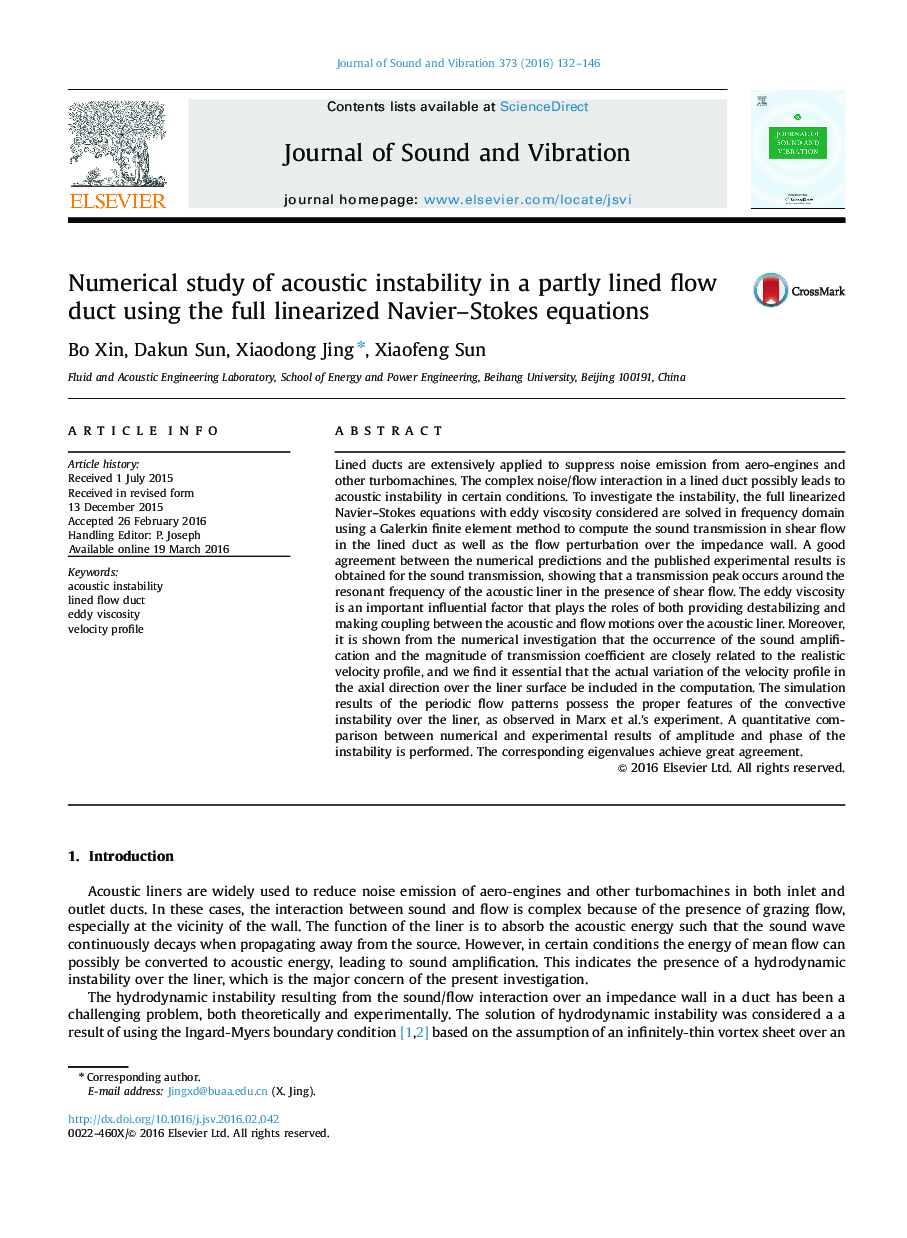| Article ID | Journal | Published Year | Pages | File Type |
|---|---|---|---|---|
| 287000 | Journal of Sound and Vibration | 2016 | 15 Pages |
Lined ducts are extensively applied to suppress noise emission from aero-engines and other turbomachines. The complex noise/flow interaction in a lined duct possibly leads to acoustic instability in certain conditions. To investigate the instability, the full linearized Navier–Stokes equations with eddy viscosity considered are solved in frequency domain using a Galerkin finite element method to compute the sound transmission in shear flow in the lined duct as well as the flow perturbation over the impedance wall. A good agreement between the numerical predictions and the published experimental results is obtained for the sound transmission, showing that a transmission peak occurs around the resonant frequency of the acoustic liner in the presence of shear flow. The eddy viscosity is an important influential factor that plays the roles of both providing destabilizing and making coupling between the acoustic and flow motions over the acoustic liner. Moreover, it is shown from the numerical investigation that the occurrence of the sound amplification and the magnitude of transmission coefficient are closely related to the realistic velocity profile, and we find it essential that the actual variation of the velocity profile in the axial direction over the liner surface be included in the computation. The simulation results of the periodic flow patterns possess the proper features of the convective instability over the liner, as observed in Marx et al.׳s experiment. A quantitative comparison between numerical and experimental results of amplitude and phase of the instability is performed. The corresponding eigenvalues achieve great agreement.
